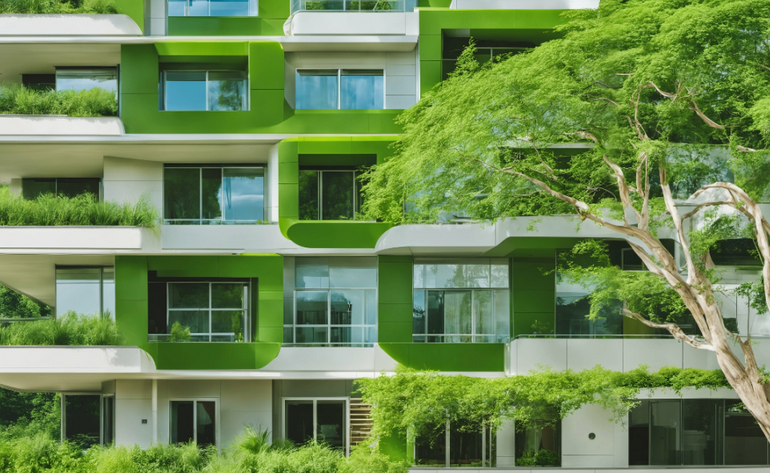Sustainable living has become an increasingly important focus within the field of architecture, leading to the development of innovative solutions aimed at creating green homes. These architectural interventions prioritize energy efficiency, environmental preservation, and the well-being of residents, ultimately contributing to a more sustainable and balanced way of life. Here are some key architectural innovations that are shaping the landscape of green homes:

Passive Design
Passive design principles are integral to creating green homes. Incorporating features such as optimal building orientation, natural ventilation, shading elements, and high-performance insulation reduces the need for mechanical heating and cooling, leading to energy savings and improved comfort for residents.
Energy-Efficient Systems
Green homes integrate energy-efficient technologies, such as solar panels, geothermal heating/cooling systems, and high-efficiency appliances, to minimize energy consumption and reliance on non-renewable resources. These systems contribute to lower utility costs and reduced environmental impact.
Net-Zero and Positive Energy Homes
Architectural innovations are driving the development of net-zero energy homes, which produce as much energy as they consume, as well as positive energy homes that generate surplus renewable energy. These homes often incorporate smart energy management systems to optimize energy usage and harness renewable resources.
Sustainable Materials and Construction Techniques
Green homes prioritize the use of sustainable and environmentally friendly building materials, such as recycled and locally sourced materials, as well as innovative construction techniques that minimize waste and reduce environmental impact. Additionally, green homes often incorporate advanced building systems, such as modular construction and prefabrication, to enhance construction efficiency.
Water Conservation and Recycling
Architectural innovations for green homes include water-efficient fixtures, rainwater harvesting systems, and greywater recycling technologies. These features reduce water consumption, minimize strain on local water supplies, and promote sustainable water management.
Biophilic Design
Biophilic design principles are instrumental in green homes, promoting the integration of natural elements, access to daylight, and connections to outdoor environments. Green homes often incorporate features such as green roofs, living walls, and ample natural light to enhance well-being and visual connection to nature.
Healthy Indoor Environments
Architectural innovations focus on creating healthy indoor environments by prioritizing features such as optimal indoor air quality, non-toxic building materials, and effective ventilation systems. Green homes aim to provide residents with spaces that promote health, well-being, and comfort.
Smart Home Technologies
The integration of smart home technologies, including energy management systems, automated lighting, and intelligent building controls, contributes to the efficiency and functionality of green homes. These technologies enable residents to monitor and optimize energy usage and promote sustainable living practices.
Community and Site Design
Green homes are often part of sustainable communities that prioritize walkability, access to public transportation, green spaces, and shared amenities. Architectural innovations include holistic site design and community-oriented planning to create cohesive, sustainable neighborhoods.
Conclusion
In conclusion, architectural innovations for green homes are instrumental in promoting sustainable living practices and addressing environmental challenges. By integrating passive design, energy-efficient systems, sustainable materials, and advanced technologies, architects are shaping the future of residential design to prioritize environmental stewardship and the well-being of occupants. These innovations contribute to the creation of green homes that are not only energy-efficient and environmentally responsible but also provide a high quality of life for residents.
